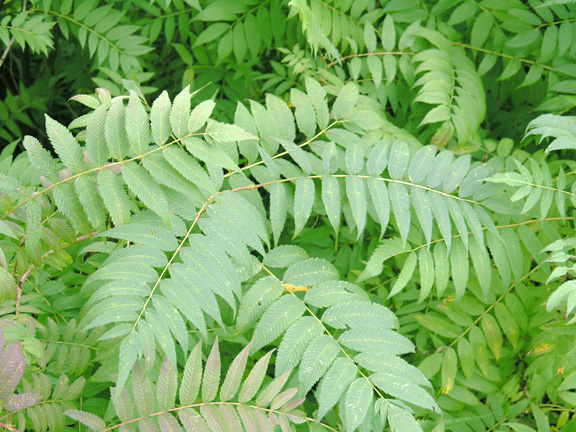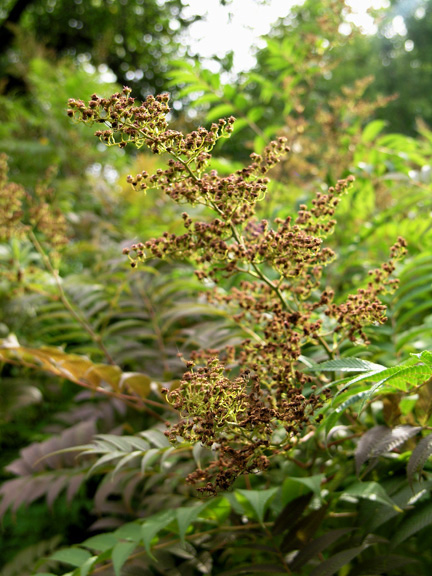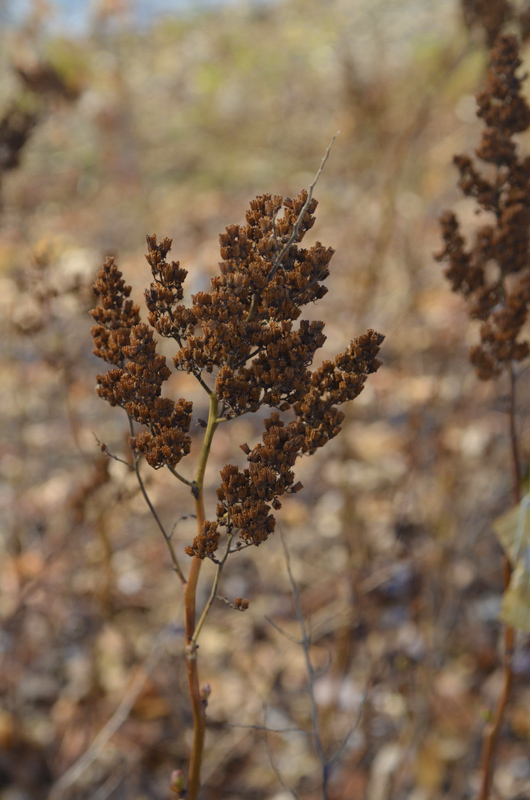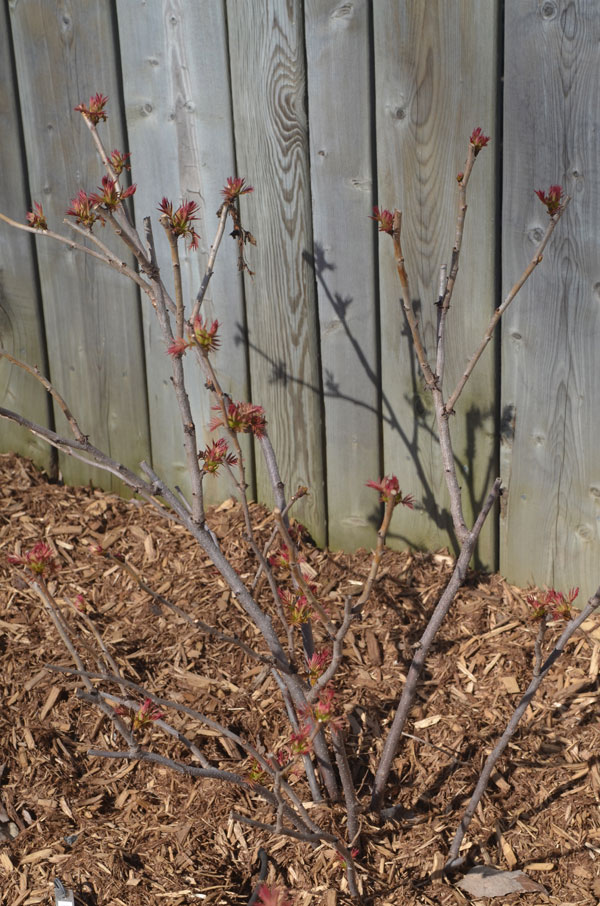
Weeds, Woody > Sorbaria > Sorbaria sorbifolia > Sorbaria sorbifolia
Sorbaria sorbifolia
Ural False Spiraea
Origin: Eastern Siberia, Manchuria, northern China, Korea, Japan.
Mike's
Opinion


"
The Ural False Spiraea is a popular plant for mass planting because of its vigorous underground rhizomes. It will colonise large areas fairly quickly and remains controllable in areas of dry shade. It should be pruned to the ground every several years to retain the uniformity of the plantings. Its white plumes are attractive in July and are suitable for dried arrangements. I have had to remove this plant from gardens with fertile soils with the aid of a backhoe and thus it can be quite a garden thug and extreme caution needs to be exercised in its use. It may reach a height of 2 m.
Michael Pascoe, NDP., ODH., CLT., MSc. (Plant Conservation)
"
| Family |
| Rosaceae |
| Genus |
| Sorbaria |
| Species |
| sorbifolia |
| Category |
| Weeds, Woody |
| Type |
| Shrub (deciduous) |
| Synonyms |
| Spiraea Sorbifolia |
| Pronunciation |
| USDA Hardiness Zone |
| 2 - 7 |
| RHS Hardiness Zone |
| H6 - H7 |
| Temperature (°C) |
| -20 - (-15) |
| Temperature (°F) |
| -4 - 5 |
| Height |
| 1-1.5 m |
| Spread |
| 1-1.5 m |
Photographs
Description and Growing Information
Flowering Period
| General Description |
| Large, deciduous suckering shrubs. |
| Landscape |
| Beds and borders, and slopes and hillsides. |
| Cultivation |
| Best grown in moderately fertile, moist but well-drained soils in full sun. Remove root suckers to avoid spread. Prune in late winter to early spring - may be cut close to the ground to rejuvenate. |
| Shape |
| Small, compact selection of thicket-forming shrub. |
| Growth |
| Fast |
| ID Characteristic |
| Showy flowers. |
| Habitat |
| Woodland garden sunny edge, dappled shade and shady edge. |
| Bark/Stem Description |
| Upright stems. |
| Leaf Description |
| Attractive pinnate leaves with distinctive colouring. |
| Flower Description |
| Small, white, spiraea-like flowers borne in large terminal panicles in summer. |
| Colour Description |
| Distinctive yellow-green flushed leaves with bright reddish-pink and bronze in spring. Leaves are green in summer, redden in autumn. |
| Notable Specimens |
| The Memorial University of Newfoundland Botanical Garden, St. John's, Newfoundland, Canada. |
| Propagation |
| Semi-hardwood cuttings in mid-summer or propagate by seed sown in containers in a cold frame in autumn. Rooted suckers can be transplanted in winter or autumn. |
| Ethnobotanical Uses (Disclaimer) |
| Leaves are edible. |



